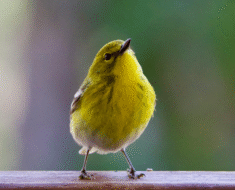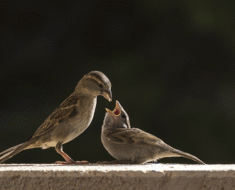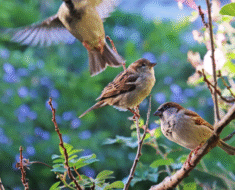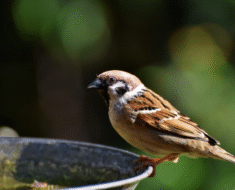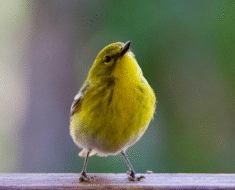Introduction
Gardens are more than just beautiful spaces—they can be thriving ecosystems when designed thoughtfully. One of the most rewarding ways to enhance your garden is by attracting local birds. Watching colorful feathers flit between branches, listening to cheerful songs, and observing natural behaviors up close can be both relaxing and educational.
But creating a bird-friendly garden isn’t just about tossing a few seeds on the ground. It requires planning, understanding the needs of your neighborhood birds, and incorporating features that make them feel safe and welcome. In this guide, we’ll explore practical tips to help your garden flourish with winged visitors.
1. Choose Native Plants
Native plants are a key factor in attracting local birds. They provide familiar food sources, such as berries, seeds, and nectar, and offer natural shelter for nesting. Unlike exotic species, native plants are adapted to your region’s climate and soil, making them easier to maintain while supporting the local ecosystem.
Consider planting shrubs with dense foliage for cover, flowering plants for nectar-feeding birds, and trees that produce fruits or nuts. The more diversity you include, the more bird species your garden is likely to attract.
2. Provide Food Sources
While native plants provide some natural food, supplemental feeding can help birds thrive, especially during harsh seasons. Simple options include:
-
Seed feeders: Offer a mix suitable for finches, sparrows, and chickadees.
-
Suet feeders: Great for woodpeckers and insect-eating birds.
-
Fruit offerings: Small pieces of apples, berries, or grapes attract a variety of species.
Make sure to keep feeders clean and regularly refill them to avoid spreading disease among visiting birds.
3. Offer Fresh Water
Access to water is crucial for drinking and bathing. A shallow birdbath or a small pond can become a centerpiece of your bird-friendly garden. To encourage frequent visits, ensure water is clean, shallow, and easily accessible. Adding a small fountain or dripper can attract more birds, as the sound of moving water is especially appealing to them.
4. Create Safe Shelter and Nesting Spots
Birds need safe spaces to rest, hide from predators, and raise their young. Consider the following:
-
Dense shrubs or hedges for natural cover.
-
Nesting boxes or birdhouses suitable for the species in your area.
-
Trees or tall plants that provide vertical structure and safety.
Avoid placing feeders too close to areas where cats or other predators can easily reach, and ensure that nesting spots are protected from harsh weather.
5. Minimize Chemical Use
Pesticides, herbicides, and fertilizers can harm local birds directly or indirectly by reducing their insect and plant food sources. Embrace organic gardening practices or natural pest control methods to maintain a safe environment for your feathered friends. Companion planting, beneficial insects, and manual removal of pests can help keep your garden thriving without chemicals.
6. Provide Seasonal Considerations
Different birds visit during different times of the year. To keep your garden active year-round:
-
Plant a mix of evergreen and deciduous trees for winter shelter.
-
Include late-season berries and seeds to feed birds in fall and early winter.
-
Offer fresh water even in colder months, preventing freezing when possible.
By planning with the seasons in mind, you ensure your garden remains a welcoming habitat throughout the year.
7. Encourage Natural Behavior
Allowing birds to forage, bathe, and interact with natural elements enhances their well-being. Avoid over-cleaning leaf litter or removing fallen fruits, as these provide insects and nutrients birds rely on. Mulching with natural materials and leaving small patches of untamed vegetation supports insect populations and encourages more species to visit.
8. Observe and Adapt
Creating a bird-friendly garden is an ongoing process that benefits greatly from careful observation. Every garden is unique, and the types of local birds that visit can vary based on location, season, and available resources. By taking the time to watch your feathered visitors, you can learn what works best in attracting and supporting them.
Start by noting which birds come to your garden, when they arrive, and which feeders or plants they prefer. Some species might favor seeds, while others prefer fruits or insects found among your plants. Observing these patterns allows you to tailor your garden’s features to meet their specific needs, enhancing the likelihood of repeat visits.
Adaptation can involve small adjustments, such as changing the placement of a feeder, adding more water sources, or planting additional shrubs for shelter. Seasonal changes also require attention—birds may shift their diets or preferred shelter as the year progresses, so modifying your garden accordingly keeps it inviting throughout the year.
By staying attentive and flexible, you’re not just creating a space for birds—you’re cultivating a dynamic ecosystem that responds to their behaviors. Over time, this approach ensures your garden remains a thriving haven for local birds and a source of enjoyment for you.
Conclusion
Creating a bird-friendly garden is a blend of science, creativity, and patience. By providing native plants, fresh food, clean water, safe shelter, and avoiding harmful chemicals, you can attract a variety of local birds to your outdoor space. Not only will you enjoy the sights and sounds of these visitors, but you’ll also be supporting biodiversity and strengthening your connection with nature.
A well-designed garden becomes a sanctuary—for you and for the birds—where every chirp and flutter brings life, movement, and joy. With thoughtful planning and ongoing care, your garden can flourish as a vibrant, bird-friendly haven all year long.
Learn simple steps to protect sparrows in detailed Sparrow Conservation Guide: How to Help Local Populations Thrive

